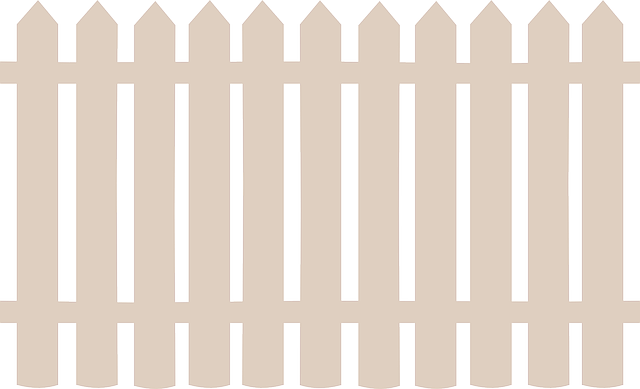Introducing the Art of Fence Staining and Sealing
A well-stained and sealed wooden fence not only enhances the aesthetic appeal of your outdoor space but also protects your investment. This comprehensive guide delves into the world of fence staining, offering insights on understanding the process, preparing your fence, choosing the perfect stain, sealing techniques, and essential maintenance tips to ensure longevity and a vibrant finish. Whether you’re an expert or a first-time DIYer, this article promises to transform your wooden fence into a striking focal point.
- Understanding Fence Staining: Benefits and Types
- Preparing Your Wooden Fence for Staining
- Choosing the Right Stain: Color Options and Application
- Sealing Techniques for Long-Lasting Protection
- Maintenance Tips to Keep Your Fence Looking New
Understanding Fence Staining: Benefits and Types
Fence staining is not just about enhancing the aesthetic appeal of your wooden fence; it offers significant protective benefits as well. By applying a coat of stain, you create a barrier that shields the wood from the elements, including harmful UV rays from the sun and moisture in the air. This process slows down the natural aging process of the fence, delaying the need for frequent repairs or replacement.
There are various types of fence staining options available, each with its own unique advantages. Some stains provide a transparent finish, allowing the natural grain of the wood to shine through while offering protection. Semi-transparent and solid color stains offer better coverage and can hide minor imperfections in the wood. Choosing the right type depends on your personal preference for aesthetics and the level of protection you desire for your fence.
Preparing Your Wooden Fence for Staining
Before applying stain or sealant, preparing your wooden fence is a crucial step to ensure optimal results and prolong the protection of your fence. Start by cleaning the fence thoroughly using a pressure washer or a stiff-bristled brush. This removes any built-up dirt, grime, and mildew, ensuring that the stain adheres properly. Next, sand down any rough spots or splinters to create a smooth surface; this also helps to open up the wood’s pores for better absorption of the stain.
Inspect your fence for any damaged or loose boards, and repair as needed. Fill in any gaps with suitable filler, and ensure all nails or screws are tight. It’s also recommended to apply a primer designed for exterior use to further prepare the wood. This layer will help the stain bond better and even out the color application.
Choosing the Right Stain: Color Options and Application
When choosing the right stain for your wooden fence, color is a crucial factor. Stains come in various hues, from natural wood tones to vibrant colors, each offering a distinct aesthetic appeal. Consider the overall look and feel you want to achieve—a subtle, natural finish or a bold, new color? The color options are endless, allowing you to personalize your fence to match your home’s exterior or create an eye-catching contrast.
Application is another key aspect. Some stains are designed for easy brush-on or spray application, while others require careful rolling or painting. Check the product instructions and choose a stain that aligns with your comfort level and available tools. This decision will impact not only the staining process but also the overall durability of the finish.
Sealing Techniques for Long-Lasting Protection
Sealing is an essential step in fence staining and maintenance, offering long-lasting protection against the elements. There are various sealing techniques to choose from, each providing different levels of durability and aesthetics. Two common methods include penetrating sealers and topcoats.
Penetrating sealers, as the name suggests, penetrate deep into the wood’s pores, creating a barrier that shields the fence from within. These sealers form a protective layer, preventing moisture absorption and minimizing UV damage. They are ideal for harsh climates and offer long-term protection. Topcoat sealers, on the other hand, provide a more visible finish, enhancing the color and grain of the wood while adding a glossy or matte shield against water, dirt, and UV rays. Regular reapplication is required to maintain their effectiveness.
Maintenance Tips to Keep Your Fence Looking New
Regular maintenance is key to keeping your wooden fence looking new and vibrant. Start by cleaning the fence at least twice a year to remove any dirt, dust, or debris that may accumulate. Use a soft-bristled brush and mild detergent for a gentle yet effective clean. After cleaning, ensure you thoroughly dry the fence to prevent water damage and peeling.
Inspect your fence for any signs of wear and tear, such as cracks, splits, or damaged boards. Promptly repair these issues to maintain the structural integrity of the fence. Applying a fresh coat of stain or sealant every 2-3 years will also help protect the wood, shielding it from harsh weather conditions and UV rays that can cause fading and discoloration.
